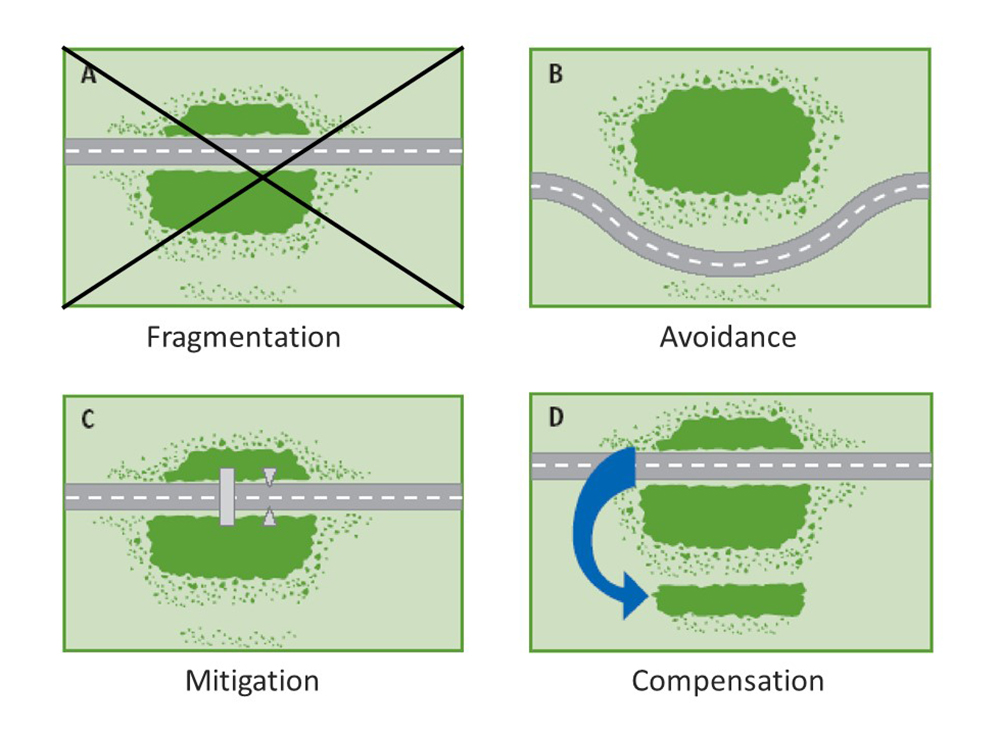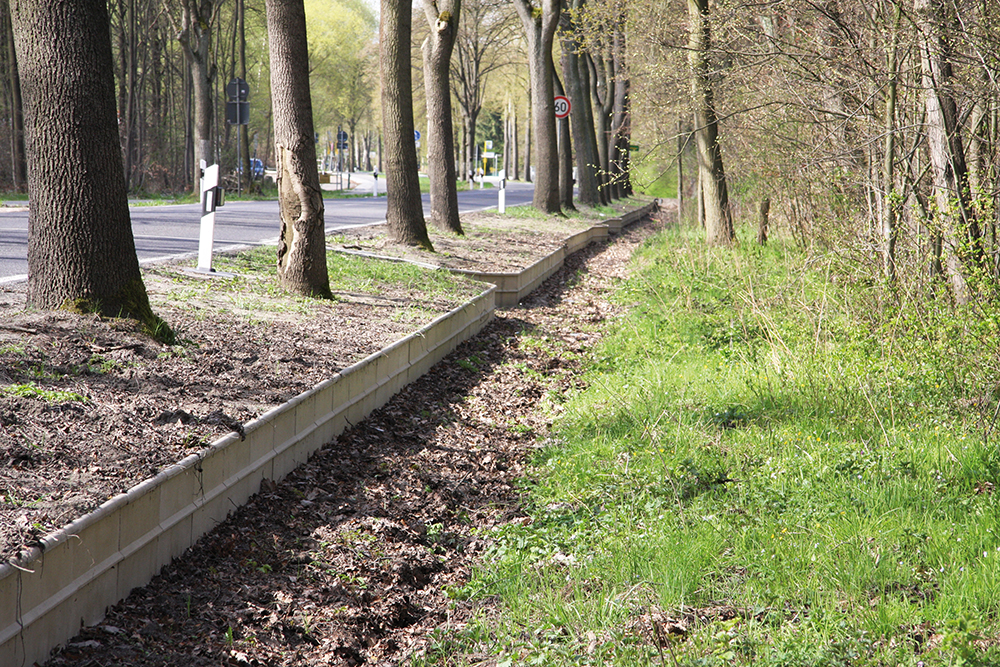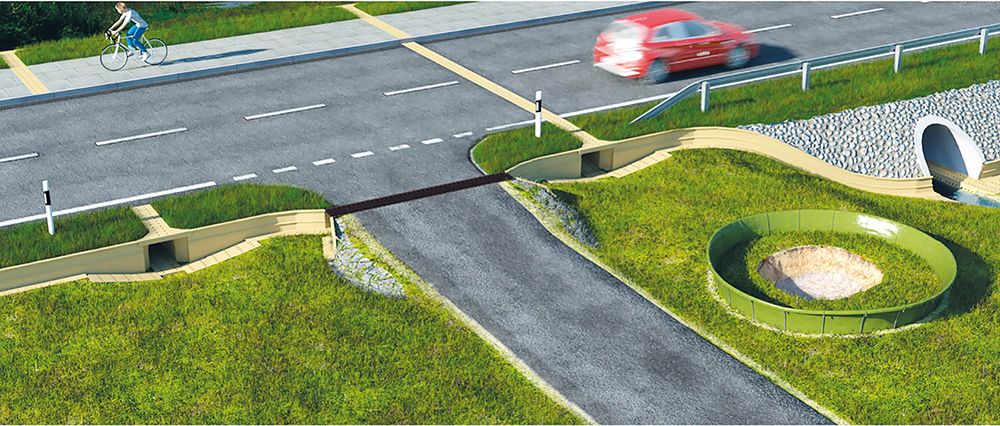
This CPD, in association with ACO, considers biodiversity in construction and how schemes can be designed and managed to help prevent fragmentation, increase genetic diversity and achieve biodiversity net gains.
Biodiversity is under threat in the UK. The UK has lost more natural wildlife and wild spaces due to human activity than any other G7 country, according to a 2021 Royal Society for the Protection of Birds (RSPB) report. Owing to its unique position at the forefront of this issue, the construction industry has a responsibility to play its part in mitigating habitat destruction.

Impacts on species decline
The construction industry has had a significant impact on biodiversity loss. Land use and construction practices contribute to the removal of natural habitats. This affects the diversity of individual species, genetic diversity and prevents migration and the occupation of a wider range of habitats.
In particular, transport infrastructure over the past few decades has had a major impact on wildlife populations worldwide, causing habitat loss, pollution and fragmentation as well as substantial rates of road traffic mortality.
Within the UK in particular, around one in seven of our wildlife species have either become extinct or threatened with extinction within the last 40 years. In its most recent analysis, Natural England has identified that over 40% of our most important habitats and 30% of our rarest species are still declining.
The scale of habitat destruction
It is worth highlighting how urgently habitat protection needs to be addressed. Statistics from the National Biodiversity Network (NBN) State of Nature report in 2019 found that more species are decreasing (41%) than increasing (26%) over the last 50 years. The fate of hedgehogs is a visceral example of this. Since 2000, their numbers have halved, according to a report in 2019, with rough estimates suggesting the population has dropped from 30 million to one million since the 1950s.
Tree coverage is also declining. According to a 2017 report, only 13% of the UK’s total land area is covered in trees. In comparison, the EU’s coverage is 35%, indicating the issues facing the UK and the impact that construction has.
We must design and maintain schemes that preserve habitats and protect biodiversity.
Species protection in the UK
The mobile nature of amphibian species, combined with the majority requiring both aquatic and terrestrial habitats, makes them particularly vulnerable from fragmentation. There are seven native amphibian species in the UK, all of which have legal protection. These are the natterjack toad, common toad, common frog, pool frog, great crested newt, smooth newt and the palmate newt. All amphibian species are listed on Schedule 5 of the Wildlife and Countryside Act.

Great crested newts and natterjack toads are also classed as European protected species and are further protected under the Conservation of Habitats and Species Regulations 2017 that makes it an offence to capture, injure, kill or disturb them and also protects their eggs, breeding sites and resting places.
Amphibians play an important part in the ecology of our ecosystems; they regulate the number of invertebrates and also sustain many species of bird, including herons and several species of raptor.
Plants are very important for wildlife, providing both food and shelter. Vegetation clearance caused by construction not only impacts animal habitats but can also be detrimental to biodiversity. There are 186 species of plants that are protected in the UK. These are listed in Wildlife and Countryside Act (Schedule 8) and they are protected from picking and sale under section 13.
Evaluating development impacts of a development
When designing a scheme, it’s important to consider the impact it will have. An Environmental Impact Assessment (EIA) is a means of systematically evaluating the potential impacts of scheme on the environment. It enables any risks to the environment and the scope of reducing them to be identified early in the planning process so they are properly understood by the public and the planning authority before planning is permitted.

EIA in the UK derives from the legal obligations set out in the European Union’s EIA Directive. The process of the EIA in the context of town and country planning in England is governed by the Town and Country Planning (Environmental Impact Assessment) Regulations 2017. These apply to development which is given planning permission under Part III of the Town and Country Planning Act 1990.
Separate legislation covers EIA for other developments that do not fall under the Town and Country Planning Legislation, including highways. If a scheme is considered a Nationally Significant Infrastructure Project (NSIP) – it would be dealt with under the 2008 Planning Act and a development consent order (DCO) would be required for permission.
Legislative considerations
The UK’s long-awaited Environment Act will put environmental principles into law. The act has set a legally binding target to ensure developments deliver a minimum increase of 10% in biodiversity. As part of the act, Biodiversity Net Gain (BNG) must be measured using a recognised biodiversity metric. BNG is an approach which aims to leave the natural environment in a measurably better state than beforehand.
Implementing BNG will help to deliver measurable improvements in projects, by creating or enhancing habitats in association with built environment assets. To support planners in understanding potential BNG, Natural England launched its Biodiversity Metric 3.0 in July 2021. The toolkit can be used by any development project, consenting body or landowner that needs to calculate biodiversity net gain in England. However, sufficient accountability measures are needed to ensure long-term planning is in place.
SuDS design
SuDS design rests on the four pillars of quantity, quality, amenity and biodiversity. In terms of biodiversity specifically, consideration should be given on how best to create and sustain better places for nature to thrive.

Chapter six of CIRIA’s The SuDS Manual (C753), (‘Designing for Biodiversity’ – 6.2.3) – states that habitats within any new SuDS scheme should link with other local and or regional habitats to help build and enhance habitat connectivity. This will help mitigate the problems associated with habitat loss and fragmentation within urban areas. SuDS schemes should aim to have a range of habitat types, as this will encourage biodiversity and result in self-sustaining and resilient ecosystems.
The UK road network
The UK has one of the densest road networks in the world with a combined length of approximately 247,000 miles and growing. Over 80% of land in the country is within 1 km of a road and road verges comprise almost 1% of the land surface of the UK.
National Highways manages almost 30,000ha of land which makes it one of the biggest land managers in the country. Road systems regularly cut directly across wildlife migration routes and can result in significant mortality, with amphibians and hedgehogs particularly susceptible.
Roads and habitats
Roads by their very nature are responsible for significant loss and fragmentation of habitats and give rise to considerable impacts on biodiversity and species population. This can be seen in picture A at the top of the page. The general hierarchy to be followed when planning and designing a new scheme is summarised through pictures B to D in priority order.
Wherever possible, impact on biodiversity should be avoided. Where this is impossible or impractical then mitigation measures should be designed into the scheme as an integral part of the design. If such measures are not sufficient, then compensation measures should be considered as the last resort.

The Design Manual for Roads and Bridges (DMRB) guidance outlines general requirements for biodiversity design on the highway (LD 118) and procedures to follow when assessing and reporting on environmental effects of a proposed scheme in line with the Environmental Impact Assessment Directive (LA 104).
Design guidance and solutions
In spite of the challenges, the construction industry is in a unique position to make a difference. Where avoidance is not possible, mitigation should be an integral part of a highway design. Correct mitigation depends on a number of factors for individual site circumstances, including types of species, population numbers and dispersal, and mitigation routes. An ecologist should be consulted as early as possible in the process.
Important design considerations
- Animal migration: It is important to consider the migration patterns of species to determine how they will potentially interact with the road network within your scheme. This will help influence the design and the solutions chosen.
- Materials: Mitigation measures should be tailored for the species ecology in particular. For example surface residues on standard concrete can be fatal to amphibians and so polymer concrete material should be used instead.
- Habitat connectivity: A variety of solutions can be installed to guide animals to safety. These include guide walls and crossing road tunnels to mitigate against fragmentation and allow the movement of animals species of a variety of sizes to cross the road safely.
- Road kerbs and gullies: Amphibians typically follow the side of the kerb along the road, as they are naturally inclined to proceed along any vertical barriers barring their way. This unfortunately can direct them straight into a traditional roadside gullypot. Relocating a gully from the kerb line can be costly and potentially impact on drainage functionality. Wildlife kerbs with a recess can help prevent tragedy. Escape ladders or mesh can also be installed within a gully to allow any trapped animals to climb out. Studies on escape ladders have shown that such solutions can provide an effective means of escape.
- Construction areas: You may also consider temporary fencing around construction areas to prevent animal incursion into the site. This is vital during breeding and spawning times. It is important to design a scheme with a range of integrated solutions to ensure wildlife is directed away from danger, and ensure that habitats remain connected.
- Maintenance: As well as the design and construction of mitigation measures, it’s also important to consider maintenance requirements to ensure they continue to function. This often entails simple measures such as:
- Undertaking maintenance activities annually before the migration period begins;
- Repairing any damaged components;
- Removing any obstruction or vegetation that hinders amphibian movements;
- Modifying any elements that could be a trap for small animals for example, nearby gullies; and
- Flushing of amphibian contact surfaces at intervals dependent on the nature of the site, such as buildup of debris, detritus and pollution.
Conclusion
When designing highways schemes, it is vital that wildlife is considered. Avoiding fragmentation should always be the first choice but mitigation measures should always be designed where this is impossible. This will ensure the future of species such as hedgehogs and amphibians in the UK and safeguard essential habitats.
This article has been created by Construction Management in partnership with ACO
Take the test below




